Matador Network's Blog, page 2220
August 27, 2014
The world's oldest living organisms
As a human, you can probably expect to live for under a hundred years. Those of us who make it beyond the century mark are usually marveled at — but even the oldest of our species hasn’t lived past 122.
There are organisms, on the other hand, that have been in existence for the entirety of human civilization — some much longer than that, like Pando, the aspen-tree colony that has been alive for 80,000 years. Joe Hanson, host of the always-awesome YouTube channel It’s Okay to Be Smart, explains what some of our oldest living organisms on the planet are, and how it is they got to be that way. 

Songs for a road trip through the American South [playlist]
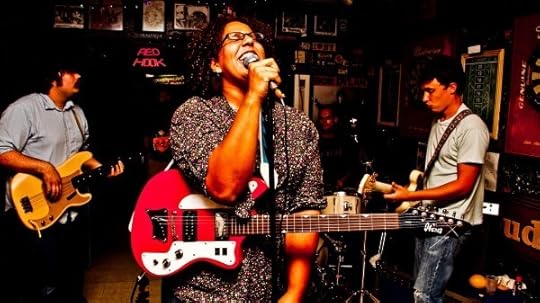
Photo: Alabama Shakes
We have set out on a truly impossible task — to create a playlist appropriate for traveling through a region with the most-storied musical history in the world. While the South did not invent music itself, it is the place where traditions of folk, blues, gospel, jazz, and rock n’ roll took hold, deepened their roots, and from there spread all over to become worldwide phenomena.
There’s no way to capture every element of Southern music into this brief playlist — there’s not even a good way to define what “Southern music” is. Not all of this music is even rooted in the South, but we think it would appropriately paint your surroundings with a little more detail, and a little more feeling.
So, whether you’re driving through the Mississippi Delta, or winding through the mountains on the Blue Ridge Parkway, we trust these songs will enrich your journey.
Southern Road Trip by Matador on Grooveshark
1. T.I. ft. Lil Wayne – “Ball”
It’s up for debate as to whether New Orleans is really part of the South — it shares geography and culture, sure, but many consider it to basically be its own little country. Having been settled as a French port long before the expansion of the United States, New Orleans joined this country as a fully formed place with a cultural history already deep and storied. As a result, whole movements in the arts, culinary, and musical traditions pop up and stick around, many times without really leaving the city limits.
Bounce has been a big musical export, thanks to the internet-sparked fame of Big Freedia, the national adoption of correlated dance craze twerking, and also the love of DJ-extraordinaire / proto-anthropologist Diplo, who scored a pretty big hit with “Express Yourself.”
“Ball” is an irresistible track — it combines the relentless, twerk-inspiring energy of Bounce with distinctly Southern hip-hop production. While Bounce, for me, tends to forgo anything resembling a song to get its high-octane energy flowing, this has a little melody in it to cut things up. T.I.’s delivery is masterful; Lil’ Wayne, who tends to phone it in these days, sounds right at home here with his horribly entertaining puns.
– Andrew
2. Alabama Shakes – “On Your Way”
Close your eyes and try and hazard a guess as to when this song was recorded. Sounds like the mid-’60s, a rough soul group early in their career, right? But this album was recorded in Nashville in 2011.
The Alabama Shakes got together while still in high school. If you think they’re too young for the themes they sing about, think again. It’s my belief that this song is about the death of lead singer and guitarist Brittany Howard’s sister, who passed away when she was still a teenager. I’m obsessed with the opening notes, the desperation in Brittany Howard’s voice, and the big payoff in the song’s swooping finale.
– Anne
3. The Everybodyfields – “Leaving Today”
One of my favorite bands of all time, The Everybodyfields were an alt-country duo from Johnson City, Tennessee. They chose to write songs during their saddest moments, and the results are haunting and wounded. This track is probably their least devastating. It manages to transmit the ambience of a dying Southern town, where everyone leaves except for the speaker, until all she has left are her memories.
– Anne
4. The Band – “When You Awake”
Because “The Night They Drove Ole’ Dixie Down” seems a little obvious, I went with another track off their self-titled second album. The Band, who famously got their start backing up singers like Ronnie Hawkins, and then a slightly more-well-known one named Bob Dylan, were not just five incredible musicians — they were American musical archivists of sorts, and sound like they could land in any era of American history.
This song in particular feels like it could have been sung at a Civil War campfire, or onstage at Woodstock. Despite having an authentic Southerner in Levon Helm, The Band were actually a group of outsiders obsessed with the history of the South — the other four were all from Canada.
– Andrew
5. Bessie Smith – “Backwater Blues”
There’s quite simply a whole lot of history in the American South that goes beyond comprehension — the kinds of things that can only be understood through art. Bessie Smith tells a tale of a bad rain that displaces an entire group of people, but she could have just as easily been narrating the aftermath of Hurricane Katrina.
Smith also took part in another 20th-century African-American Southern tradition — she left, moving to Philadelphia to pursue her singing, before dying tragically in a car accident at the age of 43.
– Andrew
6. Outkast – “Rosa Parks”
This song takes me back to 7th grade, when I first watched the music video on MTV for Total Request Live. The deliciously manic energy the song exudes certainly grabbed me back then — but I appreciate it so much more now that I’m older. There’s a lot going on here, and tons of musical subtleties to be dug up in the production, things that are lost on the average pre-pubescent, suburban white boy.
Between Big Boi’s unmistakable drawl, the eponymous subject (who seems to matter little in terms of the lyrical content), a harmonica solo that sounds like it was recorded on a street corner, and a stomping beat that could be played by the second line on Mardi Gras in New Orleans — this is one of Outkast’s most certain nods to its roots in the group’s hometown of Atlanta.
– Andrew
7. Wanda Jackson – “Funnel of Love”
When I look at pictures of my mom from the 1960s, I can’t help but hear this song. There she is, all dressed up, her hair done, her face soft and innocent. But there’s something a little defiant about her gaze. The portraits were taken in her small West Virginia town, and she looks ready to break free and move to the nearest big city, which in her case was Washington, DC.
Wanda Jackson was a contemporary of Loretta Lynn and other country greats, and despite the fact that she’s less well known, she’s my favorite of her era. Called the “queen of rockabilly,” Jackson performed spooky songs that feel more punk rock than the apple pie and America of modern country music.
– Anne
8. Sweet Honey in the Rock – “Somebody Has Prayed Me Over”
Is there any musical genre more pure than the spiritual? Nothing goes from my ears to my heart faster than these old-time songs, widely popularized by African-American congregations in the South. Sweet Honey in the Rock is an all-woman a cappella ensemble based in DC. Their beautiful arrangements are deeply steeped in Southern musical traditions.
Particularly interested in social justice, the group has sung about human rights abuses in Central America and gun violence in the inner city. But I think they’re at their strongest when focusing their incredible vocal power on simple songs like this one.
– Anne
9. The Dixie Chicks – “Top of the World”
The lyrics, “I wished I was stronger, I wished I was smarter / I wished I loved Jesus, the way my wife does,” sung from the perspective of a dying old man, just destroys me every time. It reminds me of many of the men in my family. Especially one of my uncles, named after a Civil War general, who looks more Cherokee than good old boy, and who always responded to my little kid questions with half-answers and grunts. I never knew how to read him, but this song, performed by an all-female group of country crossover superstars, offers a lot of insight and even more compassion.
– Anne
10. Lucinda Williams – “Lake Charles”
Lucinda Williams is an artist who merits repeated listening — the stories she tells through song have so many tiny details, there’s no way you could get them all at once. Her music grows only better with age, the same way she did, scoring her biggest hit with “Car Wheels on a Gravel Road” when she was in her late 40s.
This song, though, is an instant pleasure, and one of her most effortlessly enjoyable. Using just three chords, a regionally appropriate accordion player, and lyrics that hint at something big but never fully reveal what it is, she came up with a song that would sound right at home in The Band. It seems to induce an automatic calming response whenever I turn it on.
– Andrew
11. Pallbearer – “Given to the Grave”
The Deep South is also a simmering hotbed for some of the best metal bands in the country, with the likes of Thou, Eyehategod, and this group, Pallbearer, calling it home.
If you’re willing to give metal a chance, you may be pleasantly surprised. What I love about these bands is that they sound as influenced by blues, classic rock, and Southern rock as they might be by European metal, which tends to lean heavily on elements of classical music. There’s no doubt that these guys, hailing from Little Rock, probably grew up listening to a few Lynyrd Skynrd or Allman Brothers tapes alongside their Metallica. With tasteful guitar solos and a drawn-out, repetitive structure, the band bounces between the metal subgenres of “doom” and “sludge,” terms that tell you everything you need to know about how the music sounds without hearing it for yourself.
In addition to the singer bearing a comfortable resemblance to the blues-leaning Jerry Cantrell, this song also has some beautifully spare instrumental parts that create a brooding atmosphere — and part of a good road trip involves pulling back for a second to take in the whole picture. Pallbearer seem to capture a dark side of the South — these are guys who grew up in the shadow of the West Memphis Three, where wearing all black and listening to heavy metal seemed to be all you needed to get a seat on death row. Pallbearer’s commitment to their craft in the face of that legacy adds layers of depth to music that’s already brimming with it.
– Andrew


20 Vietnamese dishes and drinks
As phở gains popularity all over the globe, a spotlight has been shined on Vietnamese cuisine. Some dishes are easily accessible to unfamiliar palates; others seem intimidating in comparison. Vietnamese cuisine is extremely diverse, ranging from fragrant soups and stews to colorful sponge cakes. The array of drinks is equally heterogeneous — from fermented rice to sweet iced coffee, all sorts of flavors are showcased.
Here are 20 Vietnamese dishes and drinks you need to try, whether you’re in Vietnam or at a Vietnamese restaurant in Nebraska. Just make it happen.
Eat
Bún bò Huế

Photo: Rick Chung
A beef rice-vermicelli soup originating in Huế, bún bò Huế typically contains sliced beef shank, oxtails, and pig knuckles. The soup is customarily served with chili sauce and fresh vegetables and herbs (including lime, cilantro, green onion, banana blossoms, and more).
Phở gà

Photo: butforthesky.com
Popular as a street food in Vietnam, phở gà is an aromatic rice-noodle soup flavored with chicken and herbs. Depending on the region in Vietnam, the style of noodles, types of herbs, and taste of the broth can vary.
Bánh mì

Photo: erinpluskev
While bánh mì typically refers to the baguette, the term is frequently applied to the whole sandwich too. The most common type is bánh mì pâté chả thịt, which contains pâté, vegetables (like cucumber, cilantro, pickled carrots, and pickled daikon), a type of meat, and several condiments. In Vietnam, you might find an egg included as well.
Bánh cam

Photo: sstrieu
Found in southern Vietnamese cuisine, bánh cam are fried balls of glutinous rice flour filled with mung-bean paste and rolled in sesame seeds. Bánh rán is a similar food, scented with jasmine-flower essence.
Canh chua

Photo: Irene Khin
Canh chua finds its home in Vietnam’s Mekong Delta region. A sour soup seasoned with tamarind and complemented with pineapple, tomato, bean sprouts, and fish (typically from the Mekong), the dish is garnished with herbs and paired with white rice or rice noodles.
Bánh xèo

Photo: Mor
Bánh xèo’s literal translation is “sizzling cake,” which fits the dish rather perfectly due to the sound the batter makes when dropped into hot oil. It’s a savory rice pancake stuffed with pork, shrimp, scallions, and bean sprouts.
Bánh cuốn

Photo: Premshree Pillai
Typical of northern Vietnam, bánh cuốn are steamed rice rolls filled with pork, mushroom, and finely minced shallots. The dish is usually eaten for breakfast. A similar dish also exists in Thai cuisine.
Cháo

(via)
Seen in a number of countries, cháo is Vietnam’s version of rice porridge or congee. Served plain or with pickled vegetables and fermented tofu, the dish is quite popular with Vietnam’s Buddhist monks.
Bánh bèo

Photo: Thy Khue Ly
Bánh bèo is a specialty of Huế, which was the capital of the Nguyễn Dynasty between 1802 and 1945. The dish is a savory steamed rice pancake accompanied by toppings like fried shallots, dried shrimp, mung-bean paste, fish sauce, rice vinegar, and more.
Cơm tấm

Photo: Dawn Loh
Cơm tấm is made with broken rice and topped with grilled and shredded pork and pork skin. Pickled and fresh vegetables, fried eggs, and prawn-paste cakes may appear alongside.
Bánh canh

Photo: Alpha
Bánh canh is a thick tapioca noodle that makes an appearance in a variety of soups featuring different ingredients.
Bánh căn

Photo: Alpha
A Vietnamese ‘bread’ cooked in small clay pans, bánh căn (not to be confused with bánh canh) are small pancakes made with quail eggs. The dish is popular in many of the southern parts of Vietnam.
Bánh bò

Photo: elPadawan
Bánh bò is a dessert sponge cake made from rice flour. Cakes may be colored green (through the use of pandan leaves) or purple (through the use of magenta-plant extract).
Hủ tiếu bò kho

Photo: Jonathan Lin
A spicy Vietnamese beef and vegetable stew, hủ tiếu bò kho is made with braised or stewed beef, fish sauce, sugar, and water (or a substitute such as coconut juice). The dish is often eaten with rice, bread, or noodles.
Chạo tôm

Photo: Graham Holliday
Also originating in Huế, chạo tôm is made of ground shrimp skewed on sugarcane sticks. The dish is often served during special events such as weddings or holidays.
Drink
Bia hơi

Photo: Magalie L'Abbé
Considered by some the cheapest beer in the world, bia hơi is an unpasteurized beer sold throughout Vietnam. It’s brewed daily and is roughly 3% alcohol by volume. A glass will cost you something between 13 and 25 cents.
Cà phê sữa đá
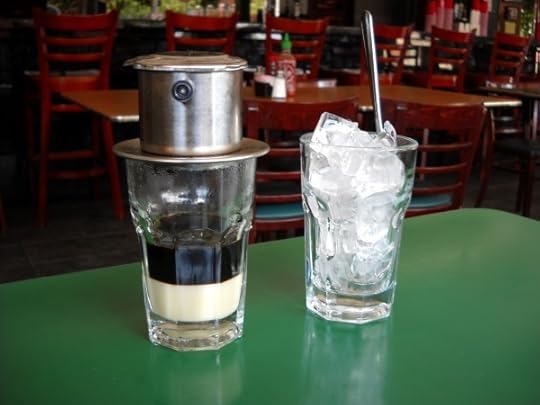
Photo: MBK (Marjie)
Cà phê sữa đá, or Vietnamese iced coffee with milk, is a dark-roast coffee brewed through a drip filter, mixed with sweetened condensed milk, and poured over ice.
Rượu gạo
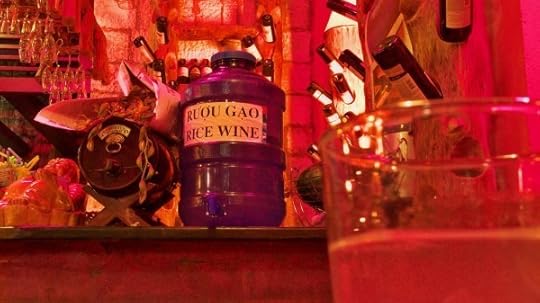
Photo: Gavin White
A type of distilled rice wine produced in Vietnam, rượu gạo is made from cooked rice that’s been fermented and subsequently distilled.
Trà sen

Photo: chinhnc77
This green tea infused with lotus flowers is consumed during Tet, the Vietnamese lunar new year. The production of high-quality lotus tea is labor intensive, requiring upwards of a thousand flowers per kilogram of tea.
Nước mía

Photo: Vivian D Nguyen
Nước mía, sugarcane juice, is a popular beverage in Vietnam. The sweet, green juice can be extracted from the stalk by a motorized or hand-cranked machine. 

Bird's-eye view of Black Rock City
Follow Matador on Vimeo
Follow Matador on YouTube
THE SHEER SIZE OF BLACK ROCK CITY intimidates me to the point that I’m not sure I’d really make it out alive after Burning Man. It amazes me how structured the entire landscape is however. Each person’s tent, RV, or sleeping bag has a “spot” within the C-shaped grid, and despite the chaos that ensues elsewhere, people pretty much stick to that system.
Kim Planert chronicled the experience of wingsuiting over Burning Man last year, in what offers a bird’s-eye view of the desert compound during the day. This footage shows just how massive Black Rock City is, as well as how all of the elements interact together to form what is ultimately America’s biggest party of the year. 

On next-gen travel search engines

Screengrab: GeniusFlight.com
I’m a budgeter. I make a budget and I like to stick to it. I’m also open-minded, so when I’m planning travel I’m not always dead set on a particular destination.
When I heard about GeniusFlight, a site where you can search for flights based on your budget, I wanted to learn more about the project. Besides, I’ve always been curious about how flight comparison sites work. I ended up interviewing the founder, Gennie Freen, to find out more.
* * *
AJ: What is the main concept behind GeniusFlight?
GF: The main concept of GeniusFlight is the ability to search by price rather than destination. This comes at a crucial point for the travel industry, as recent studies show that most Internet users will check flight comparison sites in order to achieve the best deal.
What makes GeniusFlight stand out from other travel search engines? How did you feel about competing with them?
The sheer fact that you can search by price. You only have to enter your minimum and maximum budget, your preferred dates, your departure point, and GeniusFlight will show you tons of possibilities in no time. This inspires people to try new destinations by discovering that for the same price as a flight to Paris (from Amsterdam, for example), they could set off on an adventure to Marrakech as well.
The travel market is highly competitive and for us it is a challenge to compete with all the big brands in the travel-scene and become a big brand ourselves. Therefore we thought it’s critical to have a USP [unique selling point] that sets us apart from the others.
You launched your company at the end of May this year. What types of challenges have you faced so far? What is it like being the “new kid on the block?”
Challenges are something that we willingly set for ourselves, constantly trying to improve our services and include new ones. We are shortly going to add CarHire to the Genius network and it will be based on the same simple concept: searching by price. It’s cool being the “new kid on the block” and at the same time very exciting as there’s so much room to grow.
What sorts of measures have you taken in order to meet these challenges?
Mainly, working with exceptional partners such as Skyscanner and Booking.com and with qualified people and shareholders that can act fast if necessary.
What experience did you have prior to launching GeniusFlight? Was it relevant? Has launching GeniusFlight been easier or more difficult than you expected?
I’ve been very active in the couponing business for the past 17 years; in the Netherlands, we are working for big brands like Coca-Cola. This experience was very relevant because it made us realise that lots of consumers are triggered by price. We’ve also understood that products and services have to be simple. If they are not simple enough, then you lose the consumer even faster than you’ve reached him.
What sort of planning and research did you do before establishing GeniusFlight?
To tell you the truth, I did it on my own gut feeling. Some years ago, I experienced that it was very difficult or next to impossible to search for travel options based on budget, on exact dates; with most sites and apps that I was using, I was always having to fill in a destination or didn’t get what I wanted…I only wanted to go away for couple of days for €150 — and the destination was less important for me.
I spoke to about 100 people about my idea — friends, colleagues, family — and everyone was excited. Then I decided to develop it myself.
Looking back, do you think you did enough in the preparation stages before launching GeniusFlight?
When we decided to launch, we knew it was just the beginning, so of course we could have done things in different ways and have extra insights after launching. But other bigger companies continuously improve their products as well, and so do we!
What kind of support have you had in launching your company?
We’ve had tremendous support from qualified people such as developers, marketing people, and shareholders.
What can we expect from GeniusFlight in the coming months?
We are shortly going to be launching a CarHire service, which will be joining the Genius network of flights and hotels, also price based. We’re also preparing to launch an app for smartphones and we’re working to update the mobile version of the website. Finally, the desktop version is being enhanced, as we’re adding lots of new visuals. So we have plenty of things to do in the coming months.
What advice would you give someone who wants to open their own travel search engine?
If you start a travel search engine, don’t develop a “normal,” typical one, there are enough of those. Rather search for a niche that the competitors haven’t yet found. 

Things people do on the Jersey Shore

Photo: Patrick
1. Rent mansions
My family’s first vacation house at Long Beach Island was a two-bedroom wooden bungalow with no air conditioning and a carpet that smelled like sand and feet. We’ve since upgraded to these insanely ginormous beachside mansions that sleep up to 15 people at a time. They’re absolutely beautiful, and probably the biggest house I’ll ever see in my entire life.
Standard features include spiral staircases leading up to sun decks, wrap-around porches, perfectly manicured lawns complete with hyacinth bushes, and kitschy beach decor like seashells in the bathrooms and “Life’s a Beach” welcome signs.
2. Spend all day at the beach
We get up at 8am, take our camping chairs out to the sand, sit in a circle, and pound vodka iced teas and Miller Lite until 4pm. The kids are totally content with making drip castles, and the adults all get a kick out of lying to the teenage patrollers about having the correct number of beach tags.
It doesn’t matter if there’s a hurricane, a hailstorm, or if it’s overcast and 65 degrees the entire week — we need to justify the insane cost of our beach house rental by sitting on the beach all day, dammit!
3. Eat ice cream every day
I never eat ice cream back home, but when I visit Stone Harbor, all 27 of my cousins and I make the trek to Springer’s Homemade Ice Cream to indulge in the “Springer’s Challenge” — eating a different flavor of ice cream every day.
It’s pretty obscene when you think about it, not to mention how terrible something like that is for your health. But it’s the kind of thing that’s like, “Well, I’m not going to eat ice cream for the rest of the year, so why the hell not.”
4. Ride weird modes of transportation
Not all of us have luxurious bike lanes back home, or even bikeable terrain, so we make the most of our active time by renting beach cruisers and just cycling up and down the islands all day long. Some people at the Jersey Shore go all out and rent tandems, or these crazy contraptions that seat eight people and are pedaled by four — sort of like a surrey with the fringe on top, but way more ridiculous.
5. Buy ironic t-shirts on the boardwalk
It’s not uncommon to see teenagers on the boardwalk brandishing neon-colored, silk-screened t-shirts printed with stuff like, “#1 Slut” and “OBAMAphone.”
MTV’s Jersey Shore made the boardwalk t-shirt print shop an iconic symbol of New Jersey trashiness, and ever since “T-Shirt Time!” became a thing to say before you headed out to work, people have been buying, “I pooped today!” “Sausage and peppers FTW,” and “Skinny Bitch” streetwear that they’d absolutely never be caught dead in off the boardwalk.
6. Walk around barefoot
It doesn’t matter that the blazing sun has made the blacktop streets unbearably hot, there’s no reason to wear shoes when the beach is two blocks away. Or when you’re BBQing in the backyard. Or when you’re shopping for seashells with googly eyes at the local craft fair. Or when you’re at church.
7. Pretend to enjoy gambling
At least once during our vacation, we end up in Atlantic City. We’ll breeze past the obese smokers and withering elderly folks squandering away their pensions, and slap a $100 buy-in on a craps table at Caesars Palace or lose $500 at a Texas Hold ‘em station at the Trump Taj Mahal.
We all come home at 5am, feeling exhausted and dejected. As my uncle so aptly put it, “Just give me $20 for you to sit in a chair and do nothing, and it’ll be the same experience as playing the penny slots.”
8. Play cornhole
I feel like Bag-O (beanbag toss) is the croquet of the 21st century — it’s mostly played by a bunch of rich, white people wearing capris pants and button-down linen shirts, or frat guys at “game bars.” No one really knows how to play, so the rules change depending on whoever you’re playing against, and no one has thought of a way to make it into a drinking game yet.
9. Go to that “one” bar
Unless you’re in Seaside Heights or Wildwood, most of the smaller Jersey beach towns cater to sober types. Or at least, sober on the surface. It’s not really cool to hit up the one bar in town, since we have just as wild a time drinking at our beach mansions, with our hot tubs and soft patches of grass that feel extra nice when we face-plant into them. 

11 of the most beautiful deserts
While the planet’s most impressive mountains, forests, lakes, and tourist attractions are showcased on every corner of the world wide web, one of Earth’s most inspiring natural art forms is to a great extent neglected — the desert.
A desert is an arid, barren land with little vegetation. Essentially uninhabited in comparison to most other biomes (due to the hostile environment), deserts make up roughly one-third of the planet’s land area. While the desert archetype may come to mind as sandy and sweltering, some of Earth’s deserts extend to the planet’s frozen poles.
Though deserts are no less inhospitable today than in the past, our modern methods of transportation allow us a close-up look at these regions that were previously considered extremely difficult — or impossible — to reach.
1. Namib Desert
The Namib, which at an age of 43 million years is widely accounted the world’s oldest desert, is located on the coast of southern Africa. A diverse set of animals live here, many of which exist nowhere else on the planet. The Namib Desert overlays coastal Namibia, extending into Angola and South Africa.

Photo: Scott Sporleder

Photo: Scott Sporleder

Photo: Scott Sporleder
2. Black Rock Desert
Found in Nevada, the Black Rock Desert is most famous for being the site of Burning Man, an annual weeklong event that sees the construction of Black Rock City, where Burners reside during the festival before all traces of it are removed till the following year. Much of the desert is composed of lava beds and alkali flats.

Photo: Sarah Bartell
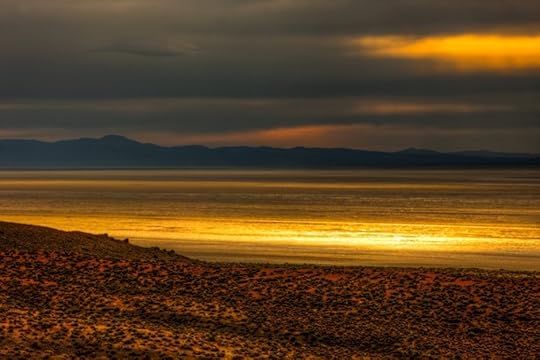
Photo: Beau Rogers
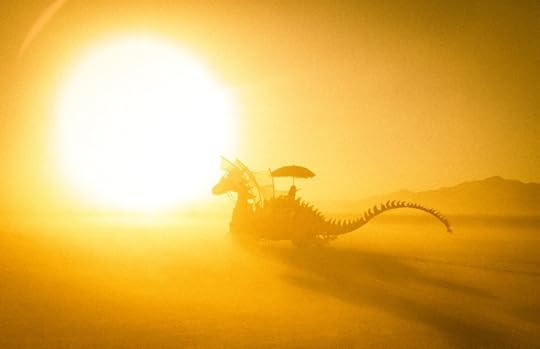
Photo: Trey Ratcliff
3. Atacama Desert
The Atacama is deemed the driest non-polar desert in the world. A plateau spanning Peru, Bolivia, Argentina, and Chile, it measures 600 miles in length and circumscribes an area over 40,000 square miles.

Photo: European Southern Observatory
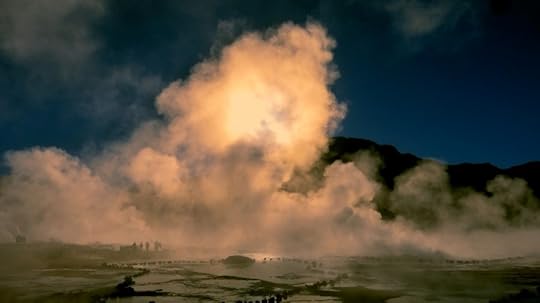
Photo: Mariano Mantel

Photo: Kimbo
4. Sahara Desert
The Sahara, which carpets a large part of Northern Africa, is the third-largest desert in the world. Winds and sporadic rainfall have shaped the Sahara into a landscape of dunes, valleys, flats, and sand seas. Oases infringe on the parched expanse, nourished by water from the desert’s underground aquifers.

Photo: Chris Zielecki

Photo: Joanna Skrzypczak

Photo: hdeb89
5. Gobi Desert
The Gobi spans parts of China and Mongolia, once encompassing some of the notable cities along the Silk Road. The Gobi is also ‘home’ to the Mongolian death worm, a cryptid described as a red worm two to five feet in length that locals claim can spew acid to kill its prey.
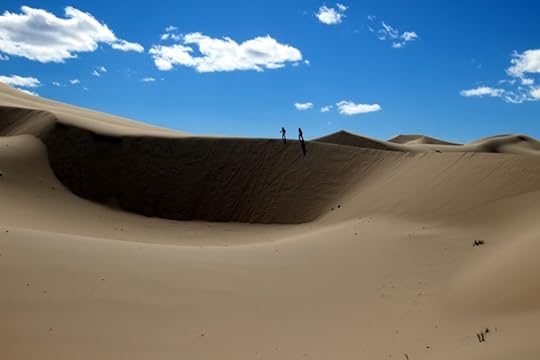
Photo: ilker ender
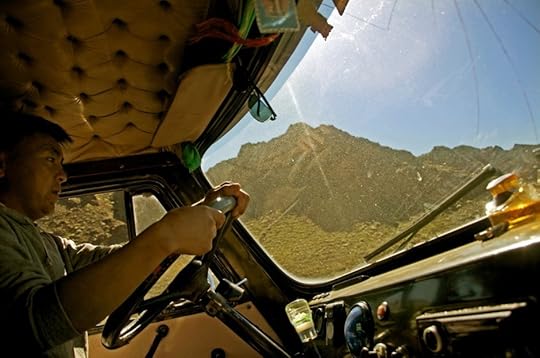
Photo: John Payne

Photo: Daniel Gorecki
6. Negev Desert
A desert in southern Israel, the Negev hosts several Bedouin cities as well as kibbutzim. The desert constitutes over 55% of Israel’s land area. Throughout the ages, this region has been settled by nomads, the Byzantine Empire, Romans, and many others. Life in the Negev is said to date back almost 7,000 years.
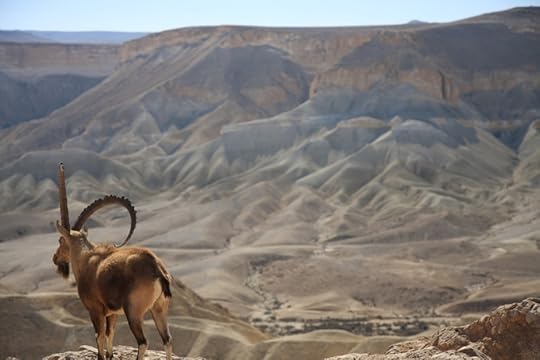
Photo: Killy Ridols
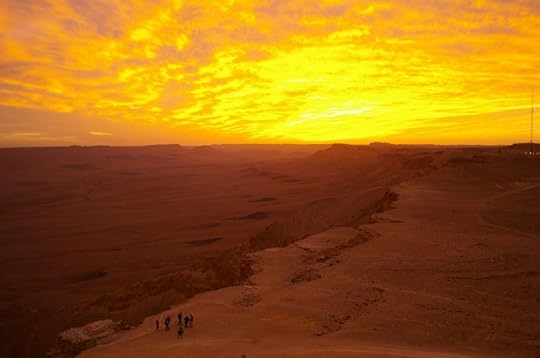
Photo: Mirella Matthiesen
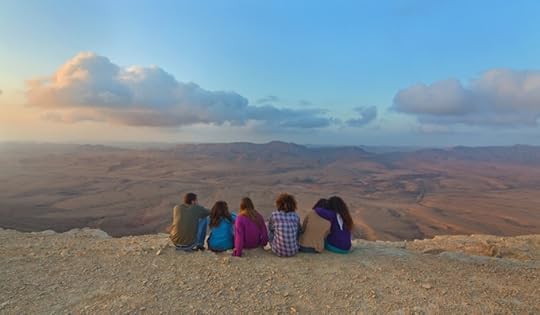
Photo: israeltourism
7. Mojave Desert
The Mojave contains Death Valley, which sits at an elevation of 282 feet below sea level, making it the lowest point in North America. Joshua trees delineate the boundaries of the region. Las Vegas, Nevada, is the Mojave’s largest city.
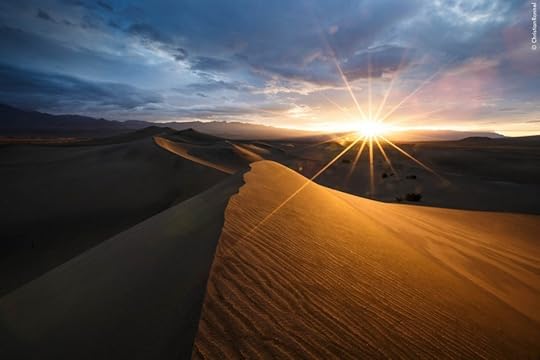
Photo: Christian Ronnel
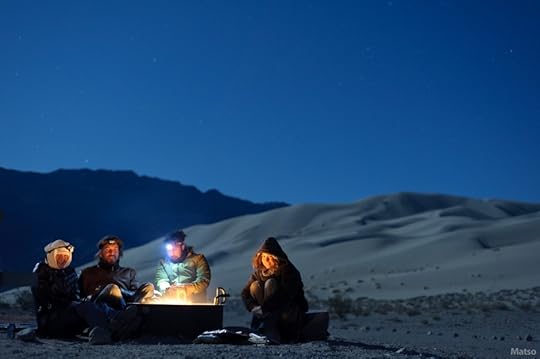
Photo: Matsography

Photo: Eric Bryan
8. Antarctic Desert
With an annual precipitation of approximately eight inches, Antarctica is classified as a desert, perhaps the least hospitable. The continent has no permanent residents. Those who do live in Antarctica are housed in the research stations that ring the continent.

Photo: Christopher Michel
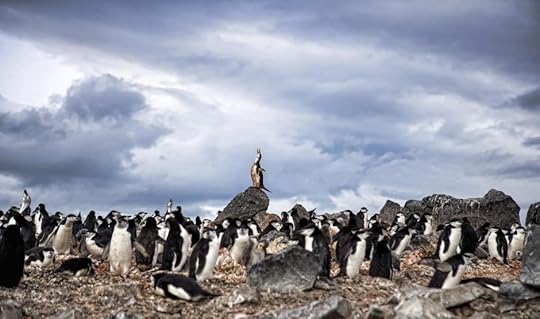
Photo: Christopher Michel
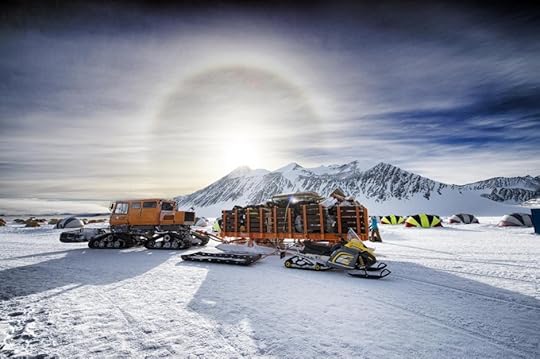
Photo: Christopher Michel
9. Sonoran Desert
The Sonoran Desert sprawls across swaths of Arizona, California, and Mexico (including Sonora, Baja California, and Baja California Sur). The saguaro cactus and the organ pipe cactus, both of which have federal preserves named after them, are native to this rocky desert.

Photo: RickyNJ

Photo: Steve Berardi
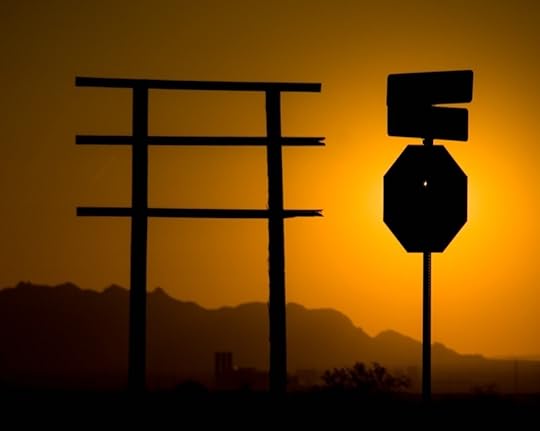
Photo: Tony Fischer
10. Thar Desert
The Thar Desert, covering 77,000 square miles, forms a geomorphic border between India and Pakistan. The desert’s formation and age are a matter of debate. Its varied habitats support a wealth of animal taxa, including 23 species of lizards and 25 species of snakes.
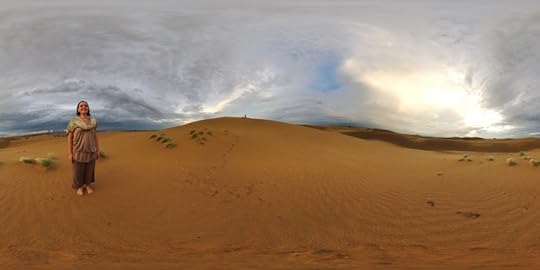
Photo: Alexandre Duret-Lutz

Photo: Andrew Miller

Photo: Arati Kumar-Rao
11. Rubʿ al Khali
The Rubʿ al Khali, the centerpiece of the Arabian Desert, is also known as the Empty Quarter. Characterized by red-orange sand dunes due to the feldspar within the sand, it’s the largest sand desert on the planet. Temperatures reach as high as 133 degrees Fahrenheit.

Photo: lintmachine

Photo: NASA Goddard Space Flight Center

Photo: Mario R

August 26, 2014
23 signs you're addicted to travel

Photo: Konstantin Lazorkin
1. Every single story you ever tell starts with “When I was in…”
2. You think of home as more of a pit stop than a long-term destination.
3. You enthusiastically read guidebooks like most people get into novels.
4. You have no fewer than five different types of currency in your wallet.
5. Your backpack or suitcase is never fully unpacked.
6. You take toilet paper everywhere you go out of habit.
7. You pass on the extra stamps in your passport, like those you can get at Machu Picchu, because you know you’re going to need every square inch of space for actual border crossings.
8. Being jet-lagged feels completely normal.
9. You annoy people by speaking in airport codes instead of actual city names.
10. You find yourself asking “Where you from?” instead of “How are you?”
11. You feel a good world map is the ultimate wall decor.
12. You have frequent-flier status on multiple airlines.
13. When you think of prices, you put things in terms of how long that money could last you on the road. “Those jeans cost what I could live off of for a week in Peru!” “Just one of his mortgage payments could set me up nicely in Southeast Asia for half a year!!”
14. When people ask what you do and you say “travel,” you forget they probably meant what you do for a living.
15. You think of potable tap water and free bathrooms that come with toilet paper as complete luxuries.
16. You can pick up your backpack or suitcase and know instantly whether you’ve met the airline weight limit or not. And you know all the airlines’ weight limits by heart.
17. You work only to fund your next trip. When that goal has been reached, you instantly quit your job and take off.
18. Your absurdly long bucket list consists only of places to go.
19. You can pack your bags for a three-month trip and be out the door in five minutes flat, if necessary.
20. You have way more friends in different countries than you do where you grew up.
21. You are planning your next trip (or two) before you’ve even finished the one you’re on.
22. Your personal version of torturous hell is the thought of being forced to stay in the same place the rest of your life.
23. Waking up at home feels really strange and disorienting. 

On indigenous land rights, Australia

Image via Evergreen Escapes International
I’m sitting at a wooden picnic table at the Arts and Cultural Centre at Wangi Falls, Litchfield National Park, Australia. The round-faced, curly-haired, mid-40s woman sitting across from me smiles and says, “A culture revealed. You should join the talk. I give that talk. Let me introduce myself. I am Joan Growden.”
I return her introduction and learn she runs the center. “I am from the Brinkin-speaking tribe,” she says. “We actually own this land.” She drifts off, her eyes staring into the distance.
As we talk, she’ll often pause for a minute or so, seemingly gone to a far-off place. Sometimes her voice is so low it’s as if she’s talking to herself. “Yeah, we own this land,” she whispers. I lean across the table to hear her better. She misunderstands.
“I am sorry for pidgin English,” she says, with a shy, almost noiseless laugh. “My mother, you know, could speak eight different languages.”
At first, I’m surprised to hear that. From what I’ve read about the Aboriginal people, I’ve been led to believe they didn’t have any formal education until quite recently. Her mother would’ve been far too old after WWII to have been enrolled in a public school.
I can’t imagine a government dispossessing me of my land, and then paying me a fee to clean it.
Sensing my confusion, Joan says, “We are 23 clans in the Litchfield area. We may have the same belief system, but we speak different languages. And my mother could speak a few of them.”
Our conversation is interrupted by a visitor who comes rushing over, asking after a ranger. He mistakes Joan’s uniform. “But I am no ranger,” she tells me. “I just run this arts centre. I opened it only two weeks ago. Before that, I had a contract with the park. I would clean the toilets and clear the rubbish.”
The matter-of-fact manner in which she says it unsettles me more than the gravity of her statement. I can’t imagine a government dispossessing me of my land, and then paying me a fee to clean it. I find the very thought absurd.
Throughout our week-long trip around the national parks in the Top End of Australia, we met a lot of rangers. All of them said the park belonged to the local Aboriginal tribe of the area, but we didn’t see any of the so-called “owners.” Most of the tour operators marketed themselves as indigenous-owned-and-run businesses. None of the people who worked there seemed indigenous.
When we brought up our observation, one of the rangers simply said, “We are the caretakers. We take care of business for the tribes. They are not inclined to mix with tourists.” Joan is the first person I’ve come across who seems to want to take care of business by herself — and does.
She started out with the cleaning contracts. When everything came through for her arts centre, she gradually let go of those to focus more on the new project. She made sure the contracts went to people of the Brinkin tribe.
“Long before Litchfield was a national park, it was home to my people. We lived in touch with our elements. In the wet season, we would live in the table tops. When the water receded, we would climb down to the wetlands, hunting kangaroos, fish, and goannas. Then in the dry season, we would head out to the beaches, going back to table tops only once the rains started.
“You see –” she draws an imaginary circle in the air, “we would walkabout, one complete circle. But now who can walkabout? Pastoral companies have put up fences. People do not want us crossing their lands. Their lands! When we have a native claim to them.”
“Where are your people now?” I ask.
“They are all scattered,” she says, then pauses. “You know the war changed everything for us.”
“We didn’t have schools and teachers. So we would paint everything. That way, the next generation always knew how it was done.”
I’ve read about the bombing of Darwin during WWII. Almost all the articles focus on the heavy casualties suffered by the Allied forces. For the first time, I hear a different perspective on the impact of the bombs.
“After the bombs fell, government officials rounded up everybody [Aborigine] and sent us off to the missions. My mother did not come back.”
“But you are back,” I say.
“Yes, but I am only one person. You know why I started an arts centre instead of a tour company?”
I shrug and say, “No.”
“It is because of painting. You see, my people would paint. We painted about everything, and we painted everywhere we went. We would paint about hunting. We would paint about fishing.”
“I saw the paintings in Ubirr,” I say.
“That’s good. That’s good,” Joan nods and says. “We didn’t have schools and teachers. So we would paint everything. That way, the next generation always knew how it was done. You see paintings of fish mataranka? You see in the paintings the fishes are always upside down. That’s to teach us that best time to catch one is when they stick nose in the mud. You just pull it right out!
“Painting connects us to our land and to our people,” she continues. “My people may be scattered about today, but I know they will come back home. We will paint. It is our spiritual affiliation to our land. The government may not recognize us as owners of our own land, but we will paint in our land. I can see all of us sitting around this table, painting and weaving our baskets.”
She drifts into another pause, a long one. She then looks at me and smiles.
“I think I will have to get one more table.” 

Timelapse of Australia's Gold Coast
Follow Matador on Vimeo
Follow Matador on YouTube
MATADOR IS INCREDIBLY LUCKY to have worked with Tourism Queensland, sending some of our top Ambassadors to explore the various areas of this diverse piece of Australia. The Gold Coast is one of those places, home to rain forests, beaches, and some of the best surf in all of the continent. If this timelapse video by Joe Capra doesn’t inspire you to book a trip there, I’m not sure what will. 

Matador Network's Blog
- Matador Network's profile
- 6 followers



